.
9.08.2013
Japan´s HTV-4 dockt erfolgreich an ISS

Flight Engineer Karen Nyberg, with the assistance of Flight Engineer Chris Cassidy, initially grappled the HTV-4 with the Canadian Space Agency-provided arm at 7:22 a.m. as the Japanese space freighter flew within about 30 feet of the complex. Flight Engineer Luca Parmitano of the European Space Agency joined the two NASA astronauts in the cupola to monitor the systems of the Japanese space freighter during its approach.
At the time of capture, the station was orbiting 260 miles just to the south of South Africa.With HTV-4 securely in the grasp of Canadarm2, the robotics team at the Johnson Space Center’s Mission Control Center remotely commanded the arm to guide HTV-4 to a ready-to-latch position on the Earth-facing port of the Harmony node. Nyberg and Cassidy then used a laptop computer to conduct the initial bolting and first stage capture of Harmony’s Active Common Berthing Mechanism (ACBM) with HTV-4’s Passive Common Berthing Mechanism (PCBM). Once that was done, the ground team completed the bolting process through second stage capture.Also known as Kounotori – Japanese for “white stork” because it is emblematic of an important delivery – the HTV is a 33-foot-long, 13-foot-diameter unmanned cargo transfer spacecraft capable of delivering both internal and external supplies and hardware to the station. HTV-4 launched from the Tanegashima Space Center in southern Japan on Aug.3 at 3:48 p.m. (Aug. 4 at 4:48 a.m., Japan time).
fter equalizing pressures between the cargo craft and the station, the crew is scheduled to open the hatches Saturday and begin the process of removing the supplies from the Kounotori’s pressurized logistics carrier.Among the items within Kounotori’s pressurized section are test samples for research experiments inside the Kibo laboratory, a new freezer capable of preserving materials at temperatures below -90 F, four small CubeSat satellites to be deployed from Kibo’s airlock as well as food, water and other supplies for the station’s crew. The pressurized section also is delivering new hardware for the Robotic Refueling Mission to demonstrate robotic satellite-servicing tools, technologies and techniques.
The HTV-4’s unpressurized section is delivering two orbital replacement units (ORUs) – a spare Main Bus Switching Unit (MBSU) and a spare Utility Transfer Assembly (UTA) – to keep the space station’s electrical system operating smoothly. The UTA maintains electrical continuity through the Solar Alpha Rotary Joint, passing electrical power generated by the complex’s huge solar arrays to station elements and payloads, while the MBSU provides switching capabilities for the various power channels and sources. ORUs are modular station components designed to be replaced periodically.
Also inside HTV’s unpressurized cargo hold is the Space Test Program – Houston 4 (STP-H4) payload, which is a suite of seven experiments for investigating space communications, Earth monitoring and materials science.
The exposed pallet to which all the unpressurized cargo is mounted will be removed from Kounotori by Canadarm2, handed off to the Japanese Experiment Module robotic arm and attached to a platform on the Kibo module’s Exposed Facility over the weekend.
In early September, the cargo vehicle will be filled with trash, detached from the station and sent to burn up in Earth's atmosphere.

NASA Television will air live the departure of a Japanese cargo ship from the International Space Station at noon Wednesday, Sept. 4.
Expedition 36 Flight Engineer Karen Nyberg of NASA will use the station's robotic arm to detach the H-II Transport Vehicle (HTV)-4 from the space station's Harmony module. This will wrap up a month's stay at the orbiting laboratory, during which time more than 3.5 tons of supplies and spare parts were unloaded from the vehicle onto the space station. The departure frees up a space station docking port for the arrival of Orbital Sciences Corp.'s Cygnus cargo vehicle in late September.
NASA TV coverage will begin at 11 a.m. EDT with an expanded edition of "Space Station Live," featuring activities surrounding the HTV-4 departure.
HTV-4 launched from the Tanegashima Space Center in southern Japan on a Japanese H-IIB rocket Aug. 3. It arrived at the space station Aug. 9 and was installed on Harmony several hours after being grappled by Nyberg.
Quelle: NASA
.
Update : 2.09.2013
.
The Exposed Pallet (EP) of the HTV4 was reinstalled into KOUNOTORI's Unpressurized Logistics Carrier (ULC).

.
Update: 3.09.2013
.

.
Update: 4.09.2013
.

.


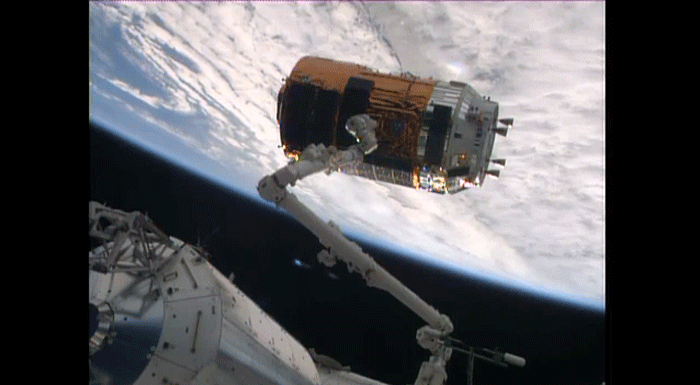

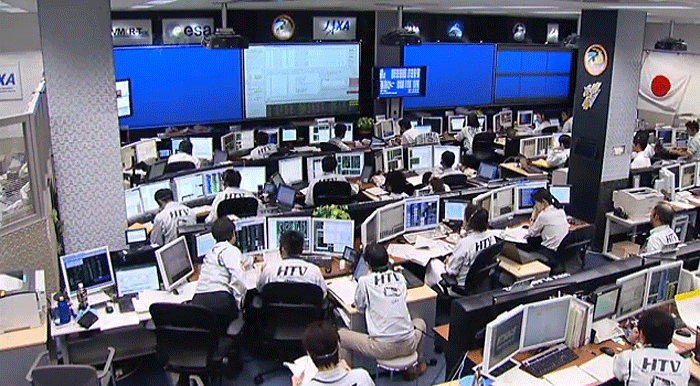
.
Update: 6.09.2013
.


Rückblick: Ankunft von HTV-4 bei ISS
.

HTV-4 bei Abdock-Manöver
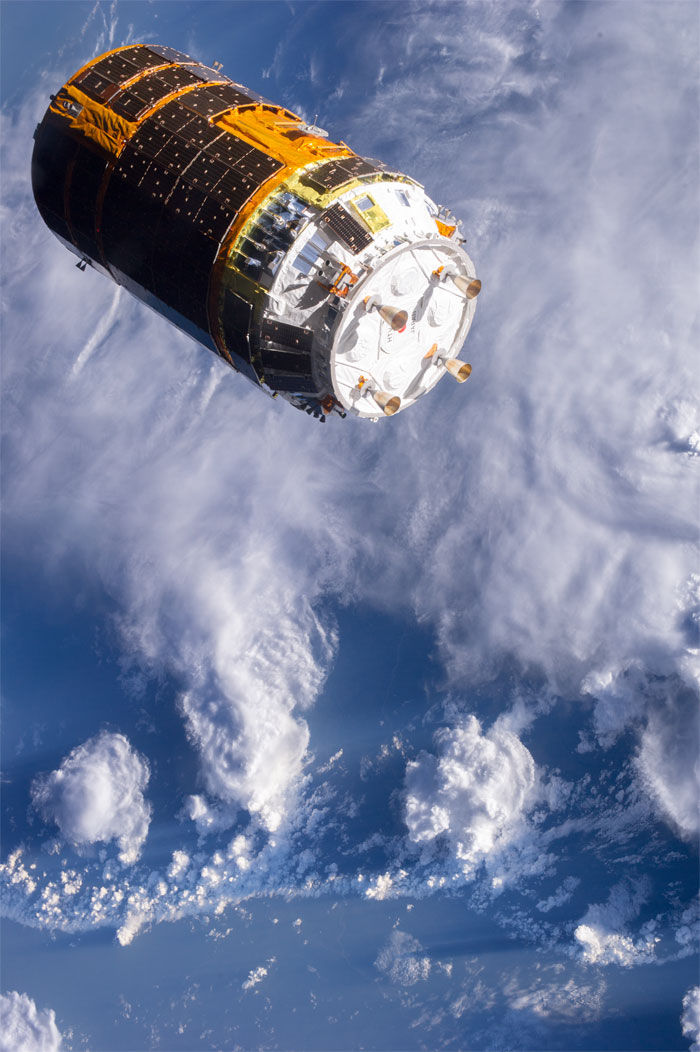
Quelle: JAXA
.
Update: 8.09.2013
JAXA space cargo transporter re-enters atmosphere after ending ISS mission
An unmanned space cargo transporter operated by the Japan Aerospace Exploration Agency re-entered Earth’s atmosphere around 3:30 p.m. Saturday and burned up over the Pacific, after completing its mission.
The Konotori No. 4 was equipped with a so-called i-Ball device to videotape its re-entry into Earth’s atmosphere and beam back images before disintegrating.
Launched Aug. 4 from the Tanegashima Space Center in Kagoshima Prefecture, the Konotori No. 4 ferried about 5.4 tons of supplies to the International Space Station, including the talking humanoid robot Kirobo and an advanced camera to capture images of comets. It docked at the ISS on Aug. 10.
The vehicle was spun off from the ISS and released into space by a robotic arm Thursday, loaded with rubbish and items no longer necessary, such as used equipment for experiments.
Quelle: The Japan Times
+

HTV4 reentry (Credit: JAXA/NASA)
KOUNOTORI4 (HTV4) descended to an altitude of 120km and reentered Earth's atmosphere around 3:37p.m. on September 7. KOUNOTORI4 successfully completed its cargo supply mission to the ISS.
Quelle: JAXA
.
Update: 9.09.2013 - Frams JAXA-TV von HTV-4 Abdocken von ISS und Re-Entry.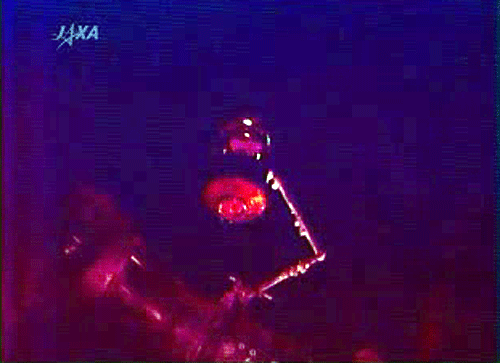


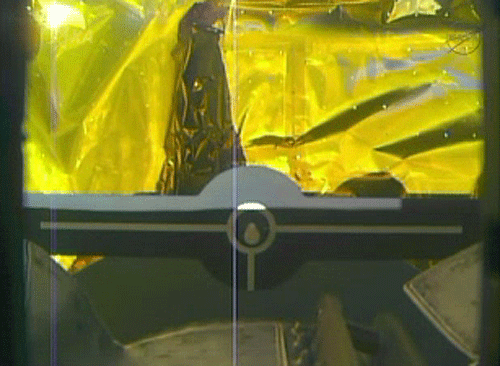




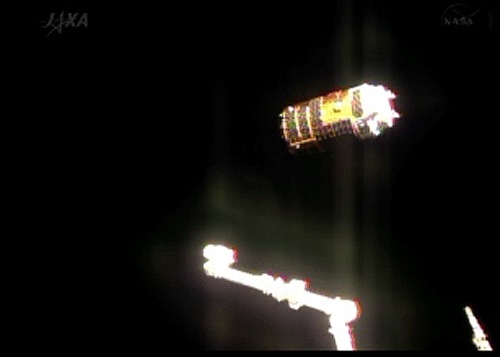
Re-Entry Aufnahmen von HTV-4





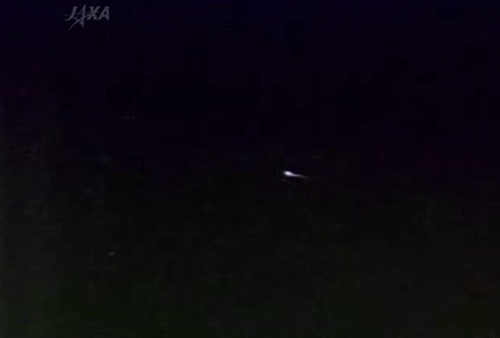
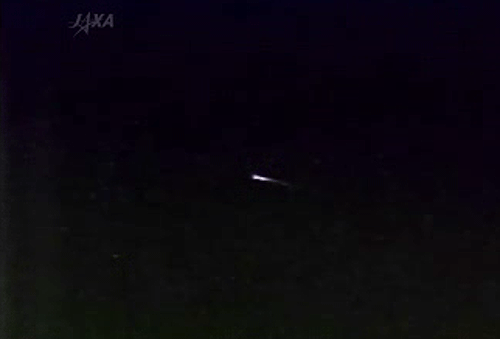
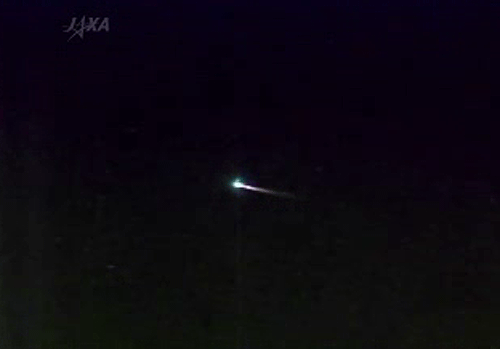

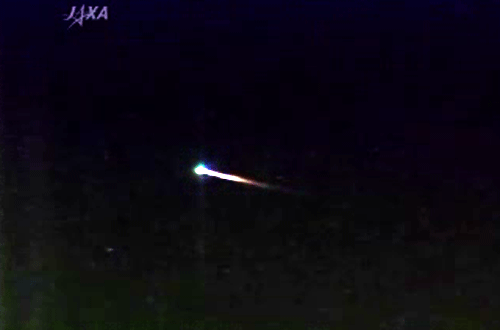







HTV-4-Mission erfolgreich beendet


Quelle: JAXA
.
Update: 12.09.2013

